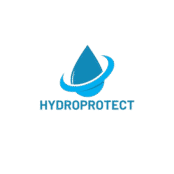Understanding Hotmelt Roof Waterproofing
Hotmelt roof waterproofing is a cutting-edge technology that ensures long-lasting protection for flat and low-sloped roofing systems. This method has been celebrated for its unrivaled durability and effectiveness compared to traditional waterproofing solutions such as torch-on membranes or liquid coatings. The impetus for choosing hotmelt technology stems from the evolving demands of hall and warehouse owners, developers, and property managers seeking reliable insulation solutions that withstand diverse climatic conditions.
What is Hotmelt Roof Waterproofing?
Components of Hotmelt Systems
A hotmelt roof waterproofing system consists of a blend of polymers, resins, and modified bitumen, applied in a molten state. This composition provides a seamless waterproof layer when cooled, effectively eliminating weak points typically associated with seams and joints. The components work in harmony to create a robust barrier against water ingress.
Application Process
The application of hotmelt systems begins with the preparation of the substrate, ensuring it is clean and primed for optimal adhesion. The hotmelt is then heated to the required temperature and applied to the surface, followed by the addition of reinforcement materials to bolster strength and longevity. Once cured, a protective layer or surfacing material, such as gravel or paving slabs, can be added to shield the membrane from potential damage.
Advantages of Hotmelt Roof Waterproofing
Unmatched Durability
Hotmelt systems are renowned for their longevity, often lasting as long as the buildings they protect. The seamless nature of the membrane mitigates the risk of leaks, common in systems with laps and joints. This durability translates into reduced maintenance costs and less frequent repairs, a crucial benefit for budget-conscious property managers.
Environmental and Economic Benefits
Hotmelt roof waterproofing systems are environmentally friendly, as they are made with recycled materials and cause minimal waste during application. The reflective properties of some surfacing options can also reduce energy consumption by regulating internal temperatures. Moreover, the lifecycle cost-effectiveness of hotmelt systems can enhance the financial planning for developers and property owners.
- Reduced maintenance costs
- Lower energy consumption
- Minimal environmental impact
Comparing Hotmelt with Other Waterproofing Methods
Traditional Torch-On Membranes
While traditional torch-on membranes are still used, they often suffer from vulnerability at seams and joints, leading to potential water infiltration. The labor-intensive application process also increases the risk of human error, which can compromise overall system integrity. In contrast, hotmelt provides a seamless, more dependable option.
Liquid Applied Membranes
Liquid applied membranes offer flexibility in installation but face challenges such as curing time and sensitivity to weather conditions. Unlike hotmelt solutions, which can be installed in a wider range of temperatures, liquid systems may not bond effectively if conditions are not optimal. This limitation can pose significant scheduling challenges for project managers.
Why Choose Hotmelt for Halls and Warehouses
Enhanced Load Bearing Capabilities
The structural robustness of hotmelt systems allows them to support additional loads, which is vital for facilities like halls and warehouses that may require rooftop installations for HVAC systems or other utilities. This feature extends the usable life of the roof and maintains the structural integrity of the building.
Adaptability to Complex Roof Designs
Hotmelt waterproofing is highly adaptable, making it ideal for complex roof geometries. Its ability to form a continuous layer over intricate details such as skylight perimeters, guttering systems, or sharp roof corners, ensures comprehensive coverage and prevents water ingress in vulnerable areas.
Summary
Hotmelt roof waterproofing represents a superior insulation solution for modern buildings, offering unmatched durability and seamless protection against water ingress. The method’s ecological benefits, cost-effectiveness, and adaptability to complex roof designs make it a preferred choice for developers and property managers alike. Whether it’s the enhanced load-bearing capabilities or the ease of maintenance, hotmelt technology consistently outshines traditional waterproofing methods, providing peace of mind for hall and warehouse owners investing in long-term infrastructural integrity.

